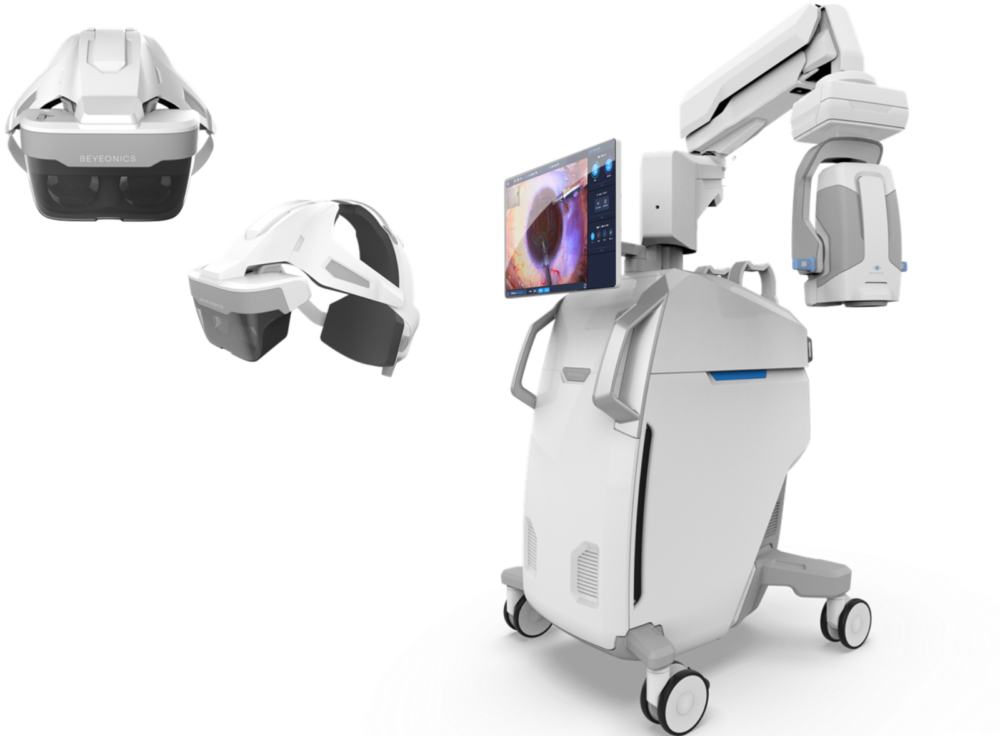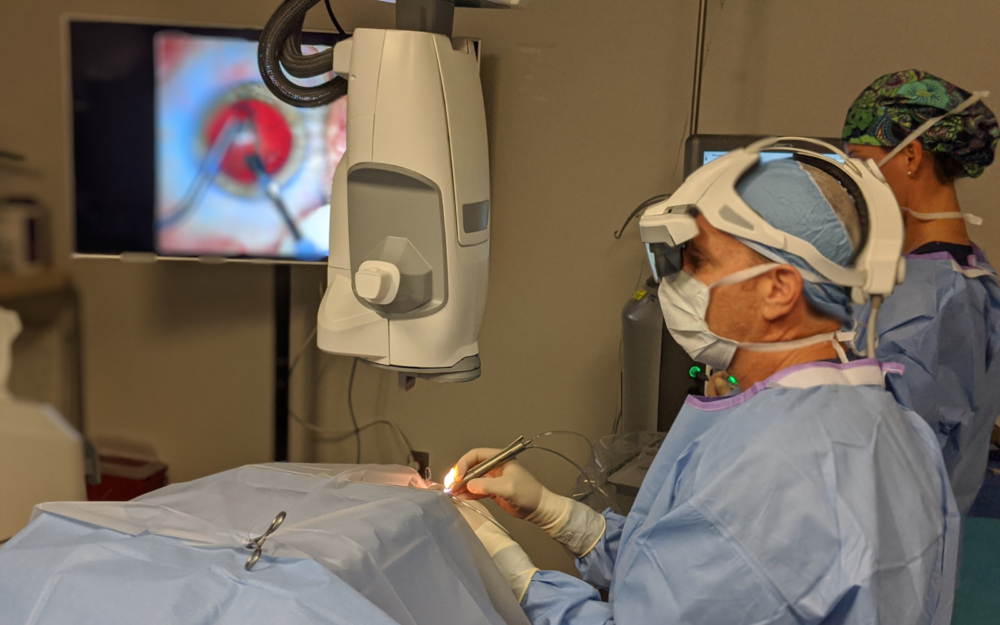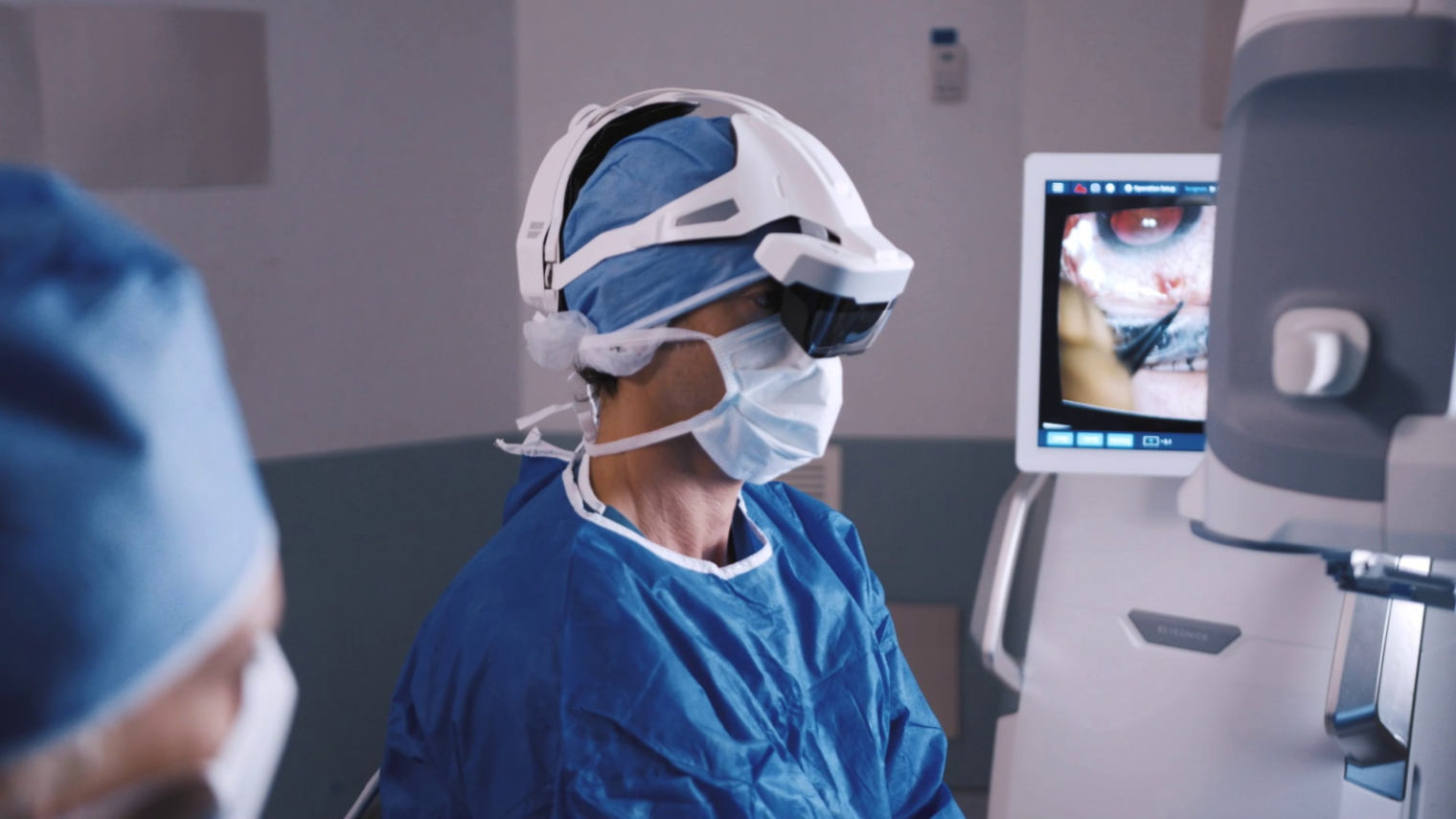Modern air force pilots wear sophisticated goggles to control their planes with gestures and augmented reality projections.
An Israeli startup wants to bring those types of sky-high “heads-up displays” down to earth – to the hospital operating room.
Head-mounted displays have been part of military aviation for close to 50 years. So, it won’t come as a surprise that the heads-up operating room system being developed by the Haifa-headquartered startup Beyeonics began its life at Israeli defense contractor Elbit.

“Pilots and physicians have a lot of similarity in their working environments,” Ron Schneider, Beyeonics cofounder and CEO, tells ISRAEL21c. “They both need superior control of their systems and improved visualization.”
Schneider worked as an engineer and manager at Elbit for more than 13 years. “Elbit is a company where ideas grow from the engineers, not only on the level of management,” Schneider says.
“This idea came from the ground level, from me and other colleagues at the company. When there’s a good idea, this is a company that knows how to support it.”
Schneider and his team at Elbit began developing surgical headsets for the operating room in 2011. In 2018, Beyeonics was spun off as its own entity.
The company has since raised some $60 million and has 90 employees with more on the way. Elbit remains the company’s largest shareholder, but investors also include medical giant Johnson & Johnson.
Beyeonics One
The first product, Beyeonics One, is intended for ophthalmic surgeons (hence the company name, which includes “eye”), although Schneider is already planning for a second-use case: spinal surgery.
For eye surgery, the system involves installing a digital 3D camera known as an “ophthalmic exoscope” above the operating table.
By donning the surgical headset and control unit, surgeons can see everything they normally would with bare eyes – and then some. The image can be magnified, and outside information can be called up as needed – that’s the augmented reality part.

Tiny movements of the head enable the surgeon to toggle between menus, zoom the image up to 20x, change the focus, and more. Beyeonics is now working on an eye-tracking system that will make the system even more accurate.
“In cataract surgery, for example, when a surgeon needs to place an artificial lens in the eye, we can provide digital markers in the display to help the surgeon align the new lenses to get to 20/20 vision,” Schneider explains.
“We can enhance the color to see the anatomy better. We can see tissues that are transparent. And because the system is connected via the cloud, additional educational material can be accessed remotely.”
The cloud connection also enables consulting with a doctor offsite – perhaps not even in the same time zone – during the surgery, giving the third-party consultant audio and video access to the procedure.
Reducing surgeon fatigue
By superimposing diagnostic information collected prior to the surgery, surgeons will have everything they need to make better decisions, resulting in superior outcomes, Schneider stresses.
“Some surgeries are tougher than others and so need more information. More expensive lenses for astigmatism or multifocals are harder to position, so the surgeon needs very accurate data,” Schneider notes.
“It’s like having something like Waze’s navigational capabilities inside the eye. We’re taking the tools a surgeon has today and ramping them up to the digital domain.”
Schneider adds that head control is preferable to how ophthalmic surgeons manipulate their equipment today, by hand or by foot pedal.

And the relatively lightweight unit reduces surgeons’ back and neck pain, allowing them to move freely rather than having to stoop over the patient for long periods of time.
This is not a trivial issue: a 2018 meta-analysis of surgical ergonomics published in the Annals of Medicine and Surgery revealed that 68% of surgeons (not just ophthalmologists) experience pain from operating.
“The first time a surgeon uses the system, we get this ‘wow’ effect,” Schneider says proudly. “It’s a tremendous relief.” A tired surgeon is simply not as effective – not something any patient (or surgeon) wants.
“It doesn’t matter how I hold my head,” notes Dr. Anat Loewenstein, chief of ophthalmology at Tel Aviv Sourasky Medical Center, who has extensively tested Beyeonics One.
“I can turn it, bend it or lean back. I can stand, look in all directions, and the image is always there. Specific movements of the head command zooming, magnification, focusing, and increasing or decreasing the light.”
Loewenstein adds that one of the cornea specialists at the medical center recently used the Beyeonics system in the operating room. “He said it was the first time he finished the transplant without back pain.”
US sales beginning
Schneider says surgeons typically need up to 30 minutes of training to feel comfortable using the system. Wisconsin-based ophthalmic surgeon Dr. Paul Singh, who has surgical headsets from competing manufacturers in three of his four operating rooms, claims it’s more like two days.
Beyeonics has partnered with global ophthalmic company BVI Medical, which markets and distributes products in 115 countries, to commercialize Beyeonics One in the United States, the first territory targeted. The product has FDA clearance and sales have already begun.
Ironically, given where Beyeonics is based, Israel does “not yet have the infrastructure to support the system” and Schneider says the company is not currently trying to move into the local market.
Schneider describes Beyeonics as a “platform” onto which software applications can be run. “We’ve created a surgeon-empowering platform that can grow as apps are installed, much like the iPhone. The hardware is strong, but its real power comes through the apps.”
That should help when the company moves beyond ophthalmology into spinal surgery.
For a peek into the future of eye surgery, the Beyeonics way, click here.

















